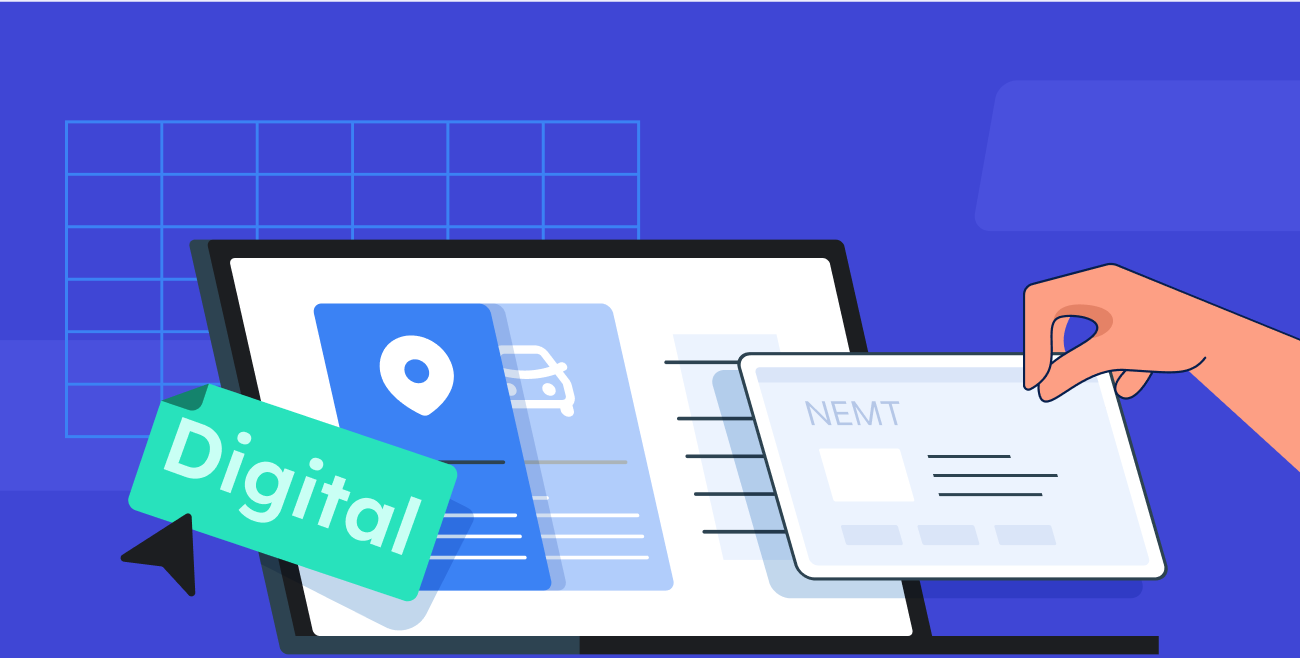
Table of Contents
Suppose you’ve heard the latest buzz surrounding Transportation Network Companies (TNCs) and their intersection with the non-emergency medical transportation (NEMT) industry. You might be wondering how it affects you.
This article sheds light on this hot topic and answers questions about the future of NEMT.
Plus, it offers insights and answers to your most pressing questions, covering everything from understanding the basics of TNCs to exploring their potential as the future of NEMT.
What are TNCs?
TNCs represent a modern evolution in the transportation industry.
They leverage technology to revolutionize how people travel in urban and suburban environments.
These companies use digital platforms—typically mobile applications—to connect passengers with drivers who use their personal, non-commercial vehicles for transportation services.
The rise of TNCs can be traced back to the increasing use of smartphones and the internet.
These technological advancements have enabled TNCs to create user-friendly apps. With just a few taps on their screens, passengers can request rides. These apps facilitate ride booking and provide real-time vehicle tracking, transparent pricing models, and seamless payment processes.
All these features combine to offer users a highly convenient and efficient service.
The Sharing Economy and TNCs
One key aspect of TNCs is their focus on the sharing economy.
Unlike traditional taxi services, TNC drivers are usually ordinary individuals looking to monetize their vehicles and time. This approach has opened up new economic opportunities for many people, allowing them to work flexible hours and make their own schedules.
TNCs are often categorized as ridesharing or ride-sourcing services. However, it’s important to note that the term “ridesharing” can sometimes be misleading. True ridesharing involves sharing a ride with others going in the same direction, which is more akin to carpooling.
TNCs, on the other hand, typically involve a driver transporting a passenger to their destination, similar to a taxi service but with a modern, technology-driven twist.
In the current market, some of the most prominent examples of TNCs include Uber and Lyft. These companies have become household names, synonymous with quick, convenient, and often cost-effective transportation.
Do More with Less
Handle more trips with fewer dispatchers on your payroll with Tobi.
Request a DemoHow Do TNCs Connect Riders and Drivers?
The process begins with a user-friendly mobile application.
Passengers create their profiles, setting the stage for their transportation journey. By entering their destination into the app, they receive an instant fare estimate calculated by transparent pricing algorithms.
Matching Process
The TNC’s sophisticated algorithm swiftly scans for available nearby drivers, considering factors like location, route, and time to ensure a prompt response.
Drivers using their vehicles receive notifications of nearby ride requests through their app version. The decision to accept a ride rests entirely with them, adding a layer of flexibility to their work.
Real-Time Tracking and Communication
Upon accepting a ride, the driver’s details and estimated arrival time are immediately shared with the passenger.
This real-time tracking feature enhances convenience and adds a sense of security, as passengers can follow their driver’s progress. Communication features in the app allow for easy coordination, ensuring both parties are on the same page.
Are TNCs the future of NEMT?
Addressing the question of whether TNCs are the future of NEMT is indeed a complex one.
The answer lies somewhere between the evolution of transportation and healthcare services, tied with various regulatory, operational, and safety considerations.
Currently, the integration of TNCs into the NEMT sector paints a promising yet challenging picture.
On the one hand, various states have begun acknowledging the potential of TNCs to broaden the spectrum of transportation options available to patients.
This recognition is significant, considering transportation’s crucial role in healthcare accessibility.
Lyft has already forged partnerships with approximately 35 state Medicaid programs, an example of its growing presence in the NEMT industry.
However, the journey of TNCs in fully integrating into NEMT is not without its hurdles. No specific legislation exists to govern TNCs in the context of NEMT.
Concerns Arising from the Regulatory Oversight Gap in TNCs
While TNCs offer an innovative and potentially more accessible transportation solution, their current operational model does not fully align with the established standards and regulations of the NEMT sector.
Employment Status of Drivers
TNC drivers are classified as independent contractors, not employees.
This distinction affects the level of control and oversight NEMT providers typically have over their drivers, impacting consistency in service quality and patient safety.
Licensing and Regulation
Unlike traditional Taxi or Medical Transportation companies, TNCs often operate without the same level of city-specific licenses. This discrepancy can lead to uneven standards of service across different regions.
Insurance Requirements
The auto and general liability insurance requirements for TNCs differ from those of more traditional transportation providers. This difference could affect passenger safety and liability in accidents or incidents.
Training and Expertise
Currently, TNC drivers may not have mandatory training in first aid, CPR, or handling blood-borne pathogens. Additionally, they might lack specialized training to assist older adults or individuals with disabilities, which is crucial in NEMT services.
Credentialing and Background Checks
The need for more stringent credentialing requirements for TNC employees contrasts sharply with the rigorous standards set for NEMT providers. This aspect is vital to ensure the safety and reliability of transportation for vulnerable patients.
So, What’s the Next Best Step in NEMT Operations?
Finding the optimal solution for enhancing NEMT services might be simpler than expected. The answer could lie in using innovative tools like Tobi.
It’s a specifically designed, advanced system to transform the management and delivery of NEMT services. Its implementation allows providers to shift their focus toward delivering exceptional service quality while significantly reducing the weight of administrative tasks.
Are you interested in taking your NEMT operations to the next level? Request a demo for a free 30-day trial and experience how Tobi makes your business better at every turn.




